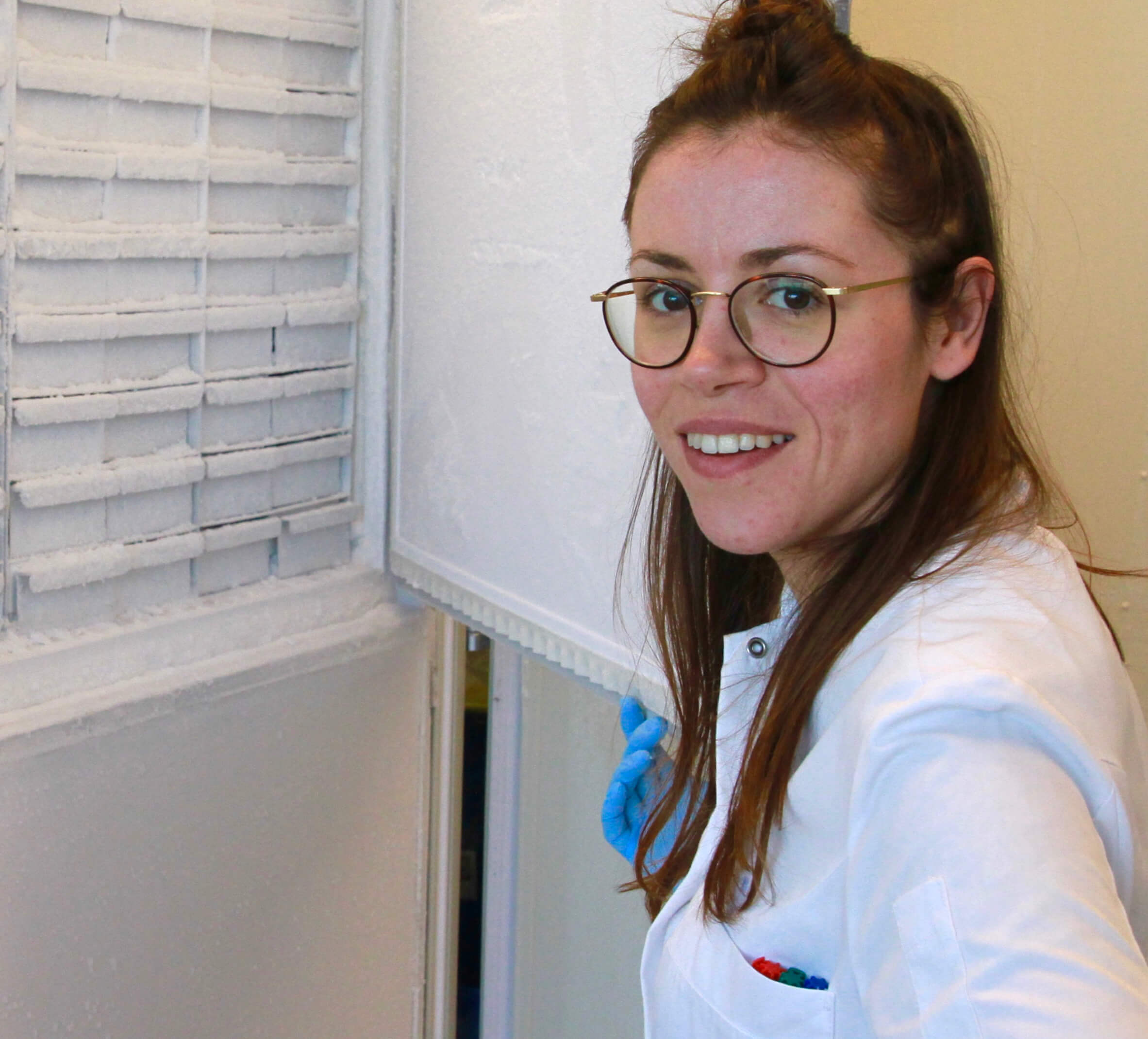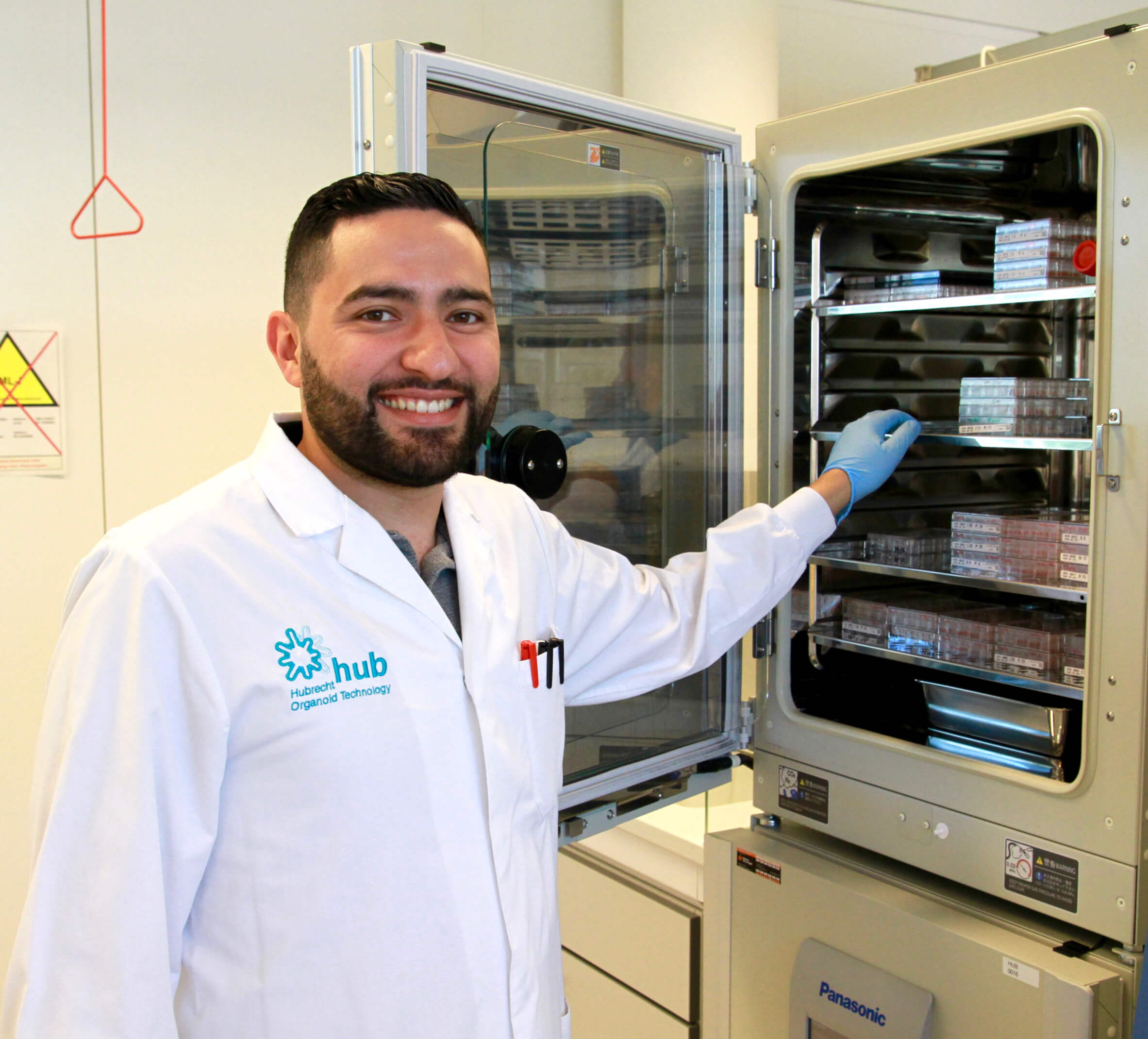Download pdf
Utrecht-based HUB wants to become the world’s leading organoid centre
Since its founding in 2013, the number of HUB (Hubrecht Organoid Technology) employees has almost doubled every year, to more than 40 today. CEO Robert Vries believes this exponential growthwill continue for a while: ‘We are currently receiving more project requests for primarily diagnostics and screening than we can take on. And with the major steps currently being taken in the field of personalised medicine, this number will certainly increase.’
More than 10 years after the cultivation of the first organoid – at the Hubrecht Institute by Toshiro Sato in the group headed by Hans Clevers – the path to commercial applications is open. So says Robert Vries, who has been working since 2013 to make HUB (Hubrecht Organoid Technology) the world’s leading organoid centre. At the core of this ambitious goal is the exclusive licence for the patents for making organoids out of adult stem cells, called ASC organoids. These patents, which stem from the research done at the Hubrecht Institute – a KNAW (Royal Dutch Academy of Sciences) institute – are the property of the KNAW. ‘With this licence, for which we pay the KNAW an annual fee, we can commercially exploit the technology in the form of licences and/or research and development work for primarily pharmaceutical companies. The benefit of this expanded patent portfolio, which includes over 50 patents in 14 patent classes and encompasses all aspects of (making) the ASC organoids, is that companies that want to work with such organoids cannot circumvent us,’ says Robert Vries.
Almost all organs
The big advantage of organoid technology is that you can allow the human cells to grow in the mini organs without them changing; the cultures remain extremely stable both from the genotype as well as the phenotype aspect. ASC Organoid Technology uses epithelial cells. This renders this method suitable for making 3D mini-structures that contain epithelial cells, such as the liver, intestine, lung, thyroid, stomach and kidney. The method is not suitable for tissue lacking epithelial cells, such as muscle tissue (including the heart), blood vessels and neurons. To make such structures, better options are available using pluripotent stem cells (IPS). However, this approach cannot compare to the ASC method with respect to the structures with epithelial cells and is only suitable for cultivating healthy cells.
The focus of organoid research was initially also on cultivating healthy cells, with the ultimate goal of regenerative medicine and cell therapy. In the meantime, the attention has switched to preclinical drug screening and diagnostics and, by extension, personalised medicine. ‘In any case, the road to cell therapy is very long, even longer (and also more uncertain) than the road to launching medicines on the market based on small molecules. However, we noticed that we could grow not only healthy cells but diseased cells as well, such as cancer cells. That opened the door to applications that can be
developed a lot faster, for example disease modelling by growing organoids directly from diseased patient tissue. Furthermore, direct cloning of multiple individual cells from primary tumours enabled molecular and functional analysis of tumour heterogeneity. And we can also work with CRISP-mediated genome modification. Human organoids appear to be very receptive to this, which offers an enormous range of possibilities in the area of modelling of malignant transformation and mutagenesis after defect DNA repair.’
Immediately profitable
The basis for the founding of HUB in 2013 was implementing organoid technology for use as a test when developing new medicines or as a diagnostic tool. It was decided to set the organisation up as a
non-profit company, in the form of a foundation. ‘We saw an enormous amount of different applications. This is not so easy to accommodate in one for-profit company: investors often want focus, so either regenerative medicines or diagnostics, and often for a specific disease. And that’s exactly what we didn’t want. We also wanted to properly set up the platform and entrench it in the Netherlands through the structure with the KNAW patents. This meant that we had to be profitable from the beginning; first earn money and then spend it. That was a challenge because – certainly in 2013 – we had to earn that money with a very early version of the technology,’ says Robert Vries. HUB, which was founded by the Hubrecht Institute and the UMC Utrecht, was started with two former post-docs at the Hubrecht: Robert Vries, who focused on business development, and current Scientific Director Sylvia Boj, who oversaw the lab activities. In the beginning, several technicians at the Hubrecht Institute also worked with us, who were hired on for specific projects. In the meantime, in addition to the around 25 people working in the various laboratories, the organisation is increasingly hiring business developers, regulatory specialists and lawyers, who have to keep the currently more than 40 licensing agreements with companies all over the world on the right track.

Research technician Josje Heuvelmans in a section of HUB’s treasure chamber, a biobank that currently has almost a thousand organoids stored at -80 °C in freezers provided by PHC Europe.

HUB (Hubrecht Organoid Technology) uses CO2 incubatorsby PHC Europe for cultivating organoids. Pictured is lab assistant Ramazan Senlice next to one of the currently seventeen incubators.